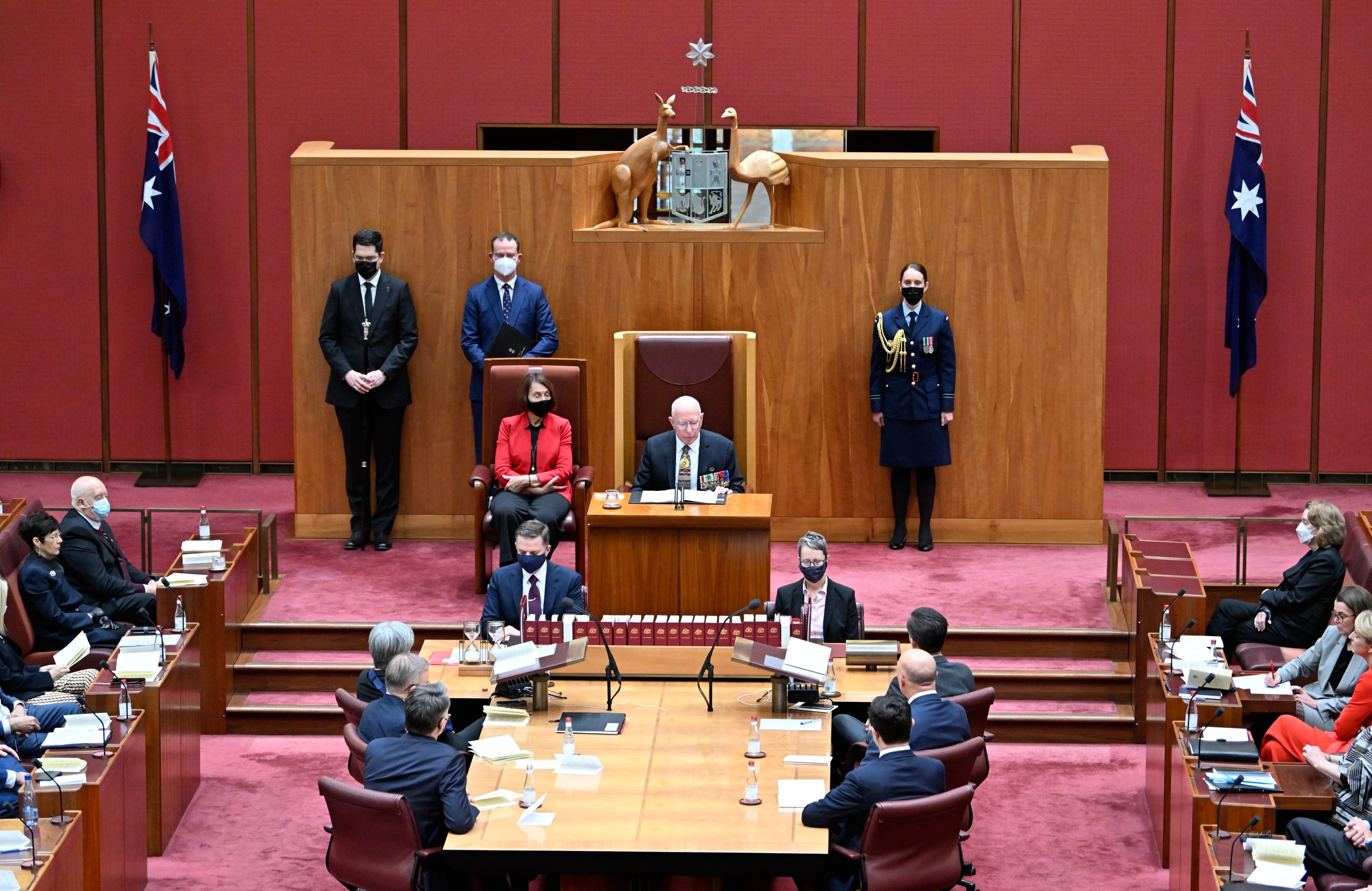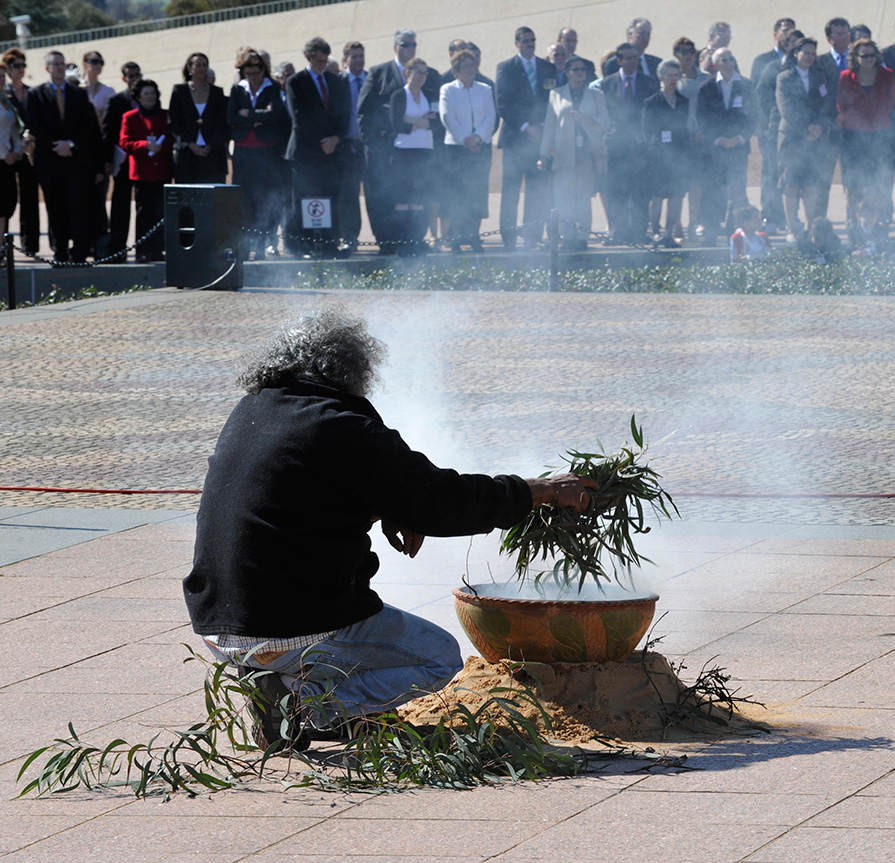From election to a new Parliament
Regular federal elections are an important feature of Australia’s democracy. Investigate the process of closing Parliament, the transition between Parliaments and the opening of a new Parliament in Australia with this fact sheet.
What will I learn?
- Most of the work of Parliament is stopped while elections take place.
- During elections the Government will act as a caretaker government.
- A new Parliament opens with a special ceremony.
Curriculum alignment
Year 5 ACHASSK115
Year 5 ACHASSK116
What happens in Parliament when there is an election?
Most of the work of Parliament is stopped when an election has been called. It is only after Australians have voted for their representatives that the new Parliament can meet and resume its work.
The Governor-General delivers a speech at the opening of a new Parliament

Penny Bradfield/DPS Auspic
Description
The Governor-General gives a speech in the Senate at the opening of a new Parliament. There is a raised platform where the Governor-General sits in a large wooden chair speaking into a microphone. The President of the Senate is sitting in a high backed chair to the left of the Governor-General. Three people stand behind the chairs under a wood and metal representation of the Australian coat-of-arms. Senators and other dignitaries sit around the end of a T-shaped table and in rows around the room.
Copyright information
Permission should be sought from DPS AUSPIC for third-party or commercial uses of this image. To contact DPS AUSPIC email: auspic@aph.gov.au or phone: 02 6277 3342.
In Australia, the timing of elections is set by the Australian Constitution and the Commonwealth Electoral Act 1918. The House of Representatives can meet for a maximum of 3 years from the opening of a new Parliament before members must face re-election. The Prime Minister chooses the date for a federal election. This could be at any time during the 3-year term.
To call an election, the Prime Minister will advise the Governor-General to prorogue Parliament. A prorogation is a special announcement by the Governor-General that brings the work of Parliament to a close. Prorogation is a British tradition and can happen at any time but nowadays is usually used only before an election is called.
Parliament during an election
House of Representatives
When an election is called the House of Representatives is dissolved – brought to an end. This triggers the issuing of writs for the election of new members to the House. Members who are hoping to be re-elected will spend this time campaigning.
Senate
The Senate is not dissolved when an election is called as most senators serve 6-year terms which span federal elections. Instead, the Senate will hold a half-Senate election to elect half of the 72 state senators plus the 4 senators representing the 2 territories. House of Representatives and half-Senate elections are usually held at the same time though they do not have to be.
The Senate does not meet at this time, but because the Senate has not been dissolved Senate committees may still meet. Senators who wish to be re-elected will spend this time campaigning. The only time the entire Senate is dissolved is in the case of a double dissolution election under section 57 of the Constitution.
Caretaker government
After Parliament is prorogued, bills – proposed laws – and other business before the Senate and the House of Representatives expire. They can be reintroduced in the next Parliament. After the House is dissolved, the government becomes a caretaker government. This means that the government does not make major decisions, except in consultation with the opposition. Parliamentary business can start again when the new Parliament meets.
After the election
When the writs are returned, the newly elected representatives can prepare for the opening of the new Parliament. To recognise that the new Parliament is different to the last one each is numbered. The current parliament is Australia’s 47th Parliament.
The party or coalition of parties who have the support of the majority of members elected to the House will form government. The government will choose their leader who will become the Prime Minister (this will generally be the leader of the party at the time of election). The Prime Minister will then decide which members should become ministers in the Government. The Prime Minister and ministers are sworn in by the Governor-General.
Opening a new parliament
Smoking ceremony, part of the opening of a new Parliament

David Foote/DPS Auspic
Description
At the opening of a new Parliament, a Welcome to Country ceremony is undertaken. At the front of Australian Parliament House, a man is crouched down and is placing a handful of eucalyptus leaves into a large bowl. The bowl is decorated with images in green and yellow and is filled with smoke. Yellow sand has been shaped to create a holder for the bowl.
Copyright information
Permission should be sought from DPS AUSPIC for third-party or commercial uses of this image. To contact DPS AUSPIC email: auspic@aph.gov.au or phone: 02 6277 3342.
A new Parliament starts with an opening ceremony that includes a Welcome to Country ceremony, which was held for the first time in February 2008 before the opening of the 42nd Parliament. Other traditional practices have been borrowed from the British Parliament. The new Parliament is declared open by the Governor-General in the Senate, not the House of Representatives, where the Governor-General delivers a speech about the new Parliament.
An important part of the opening ceremony is the swearing-in of all members of the House of Representatives, as well as the 4 senators elected to represent the Australian Capital Territory and Northern Territory. New state senators begin their term of office on 1 July following a half-Senate election. The new Parliament can now begin its work.